Hello Wild folks! Welcome to Wild Notes, my monthly letter to everyone following Wild Revival. I’m Jo; I’m a seasoned forager and a creative who finds both relief and inspiration in Nature, and this publication is where I share my seasonal noticings and plant wisdom with you. Think of it as a gentle prompt to get outside and interact with Nature in a way that feels nourishing to you. I’m so glad you’re here!
Hello Wild Ones!
It’s May, and unseasonably warm and dry here in Northumberland (and the rest of the UK) and I’ve been noticing the theme of conflicting emotions in the conversations I’ve been having with people lately, and confusion with how we are reacting to this weather. On one hand we seem to be really enjoying the sunshine, using it as a beautiful way to connect with ourselves and to slow down and savour the season in it’s present moment, and on the other hand many of us are experiencing some level of eco-anxiety, of climate-centered worry because our environment is changing and suffering. The lack of rain here has prompted a lot of us to worry about our gardens and the wild plants, and I’ve been noticing the edges of paths are very dry and dying back, where at this time of year they would usually be full of lush green growth.
I wonder whether you have been feeling this too? How have you been able to hold these opposing ideas and emotions? If, like me, you have been leaning into the joy of the sun (I’ve been sitting in my garden to eat meals, spending time at the beach and swimming in the sea) and also feeling this undercurrent of climate anxiety, then you are not alone.
Swallows
This week I noticed my first Swallow of the season. I did the annual google-search (I don’t know if any of you share in this annual modern-day ritual?!); I googled something like ‘what’s the difference between a swallow and a swift?’ to find some reassuring images to help me be sure in my identification of the visitors I am seeing flying over me. Even though I feel I have a really strong connection to the local birds and these repeat visitors like the Swallows, I find myself often doubting whether I am recognising a Swallow, Swift or even House Martin, in that moment when they swoop over me! This resource from the Wildlife Trust is one I usually use!
My initial response is a real body-centered reaction, a heart-leap of joy and excitement at seeing these beautiful creatures flying low to the ground, sweeping up and over the dips on the golf course by my house and darting back and forth unsettlingly quickly in the air. Then follows the thought: ‘It’s too early!’ as my brain catches up with the season and month we are in and I’m surprised by seeing these birds in May in Berwick. I know that lots of people living further south will have already been seeing and enjoying the swallows, but up here I rarely see one until June. They are of course following their food source (and we’ve had clouds and clouds of midges) and Nature is always right on time, and while it definitely triggered that eco-anxiety in me and it is important for me to be aware and not get complacent when it comes to climate change, it’s also my ritual to recognise Swallows as the oracle that they are, heralding in the season of Summer with their presence.
Rowan and Whitebeam
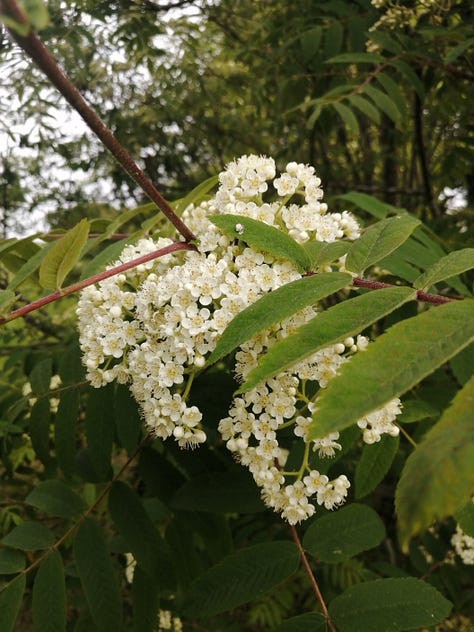
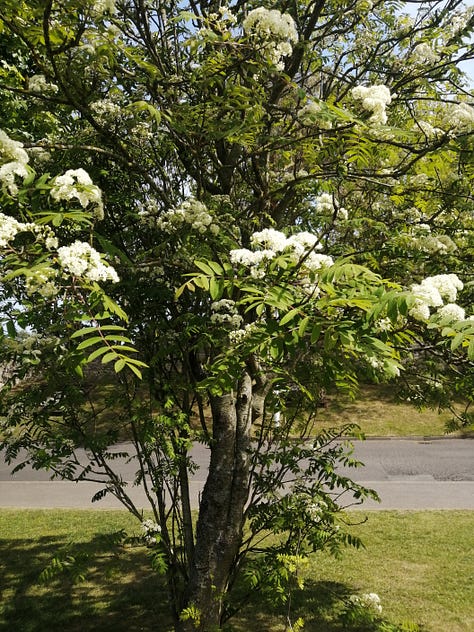
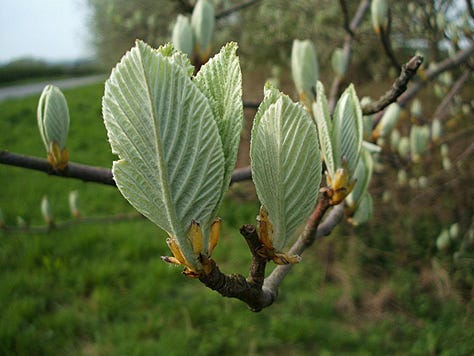
I’ve been really admiring the Rowan blossoms. The Rowan trees are in full bloom here and because it’s been so dry, the scent from the flowers has been so much more noticeable, really grabbing my attention when I walk past them and drawing me to the trees. It’s scent is heady, deep, almost sickly sweet, and has an afterscent (is this a word? It is now!) of a musky, yeasty almost-unpleasant smell of decay, decomposition or rotting. I personally find the scent weirdly compelling, and am drawn to walk closer to the Rowans to gaze at their flowers. Last year I wrote a post for my paid membership on Recognising Rowan and Whitebeam, all about these 2 trees which share the classification Sorbus and are found growing wild or in the parklands of the UK, and further afield.
I’ve also been appreciating the beautiful leaves emerging on the Whitebeam trees. They always take me back to that feeling of childhood joy, and I know lots of you will resonate with this, that seasonal rituals and certain sights in Nature can just transport us back to our childhoods (or other moments from our past) in a wonderful way, and the Whitebeam leaves coming out in spring are for me one of these really strong pulls. One of the schools I attended had a line of Whitebeams growing behind the science blocks, and I used to call them ‘icing trees’; their amazingly pale minty-green leaves stand upright from the branches when they are first coming out, which makes them quite distinctive from the other trees coming out right now. The leaves are soft with a bit of down on them, and because the lobes of the leaves start to form in clear-cut definition, it’s almost as if I’ve made some peppermint soft icing (like we used to do in Brownies group!) with a couple of drops of green food colouring, rolled it out and used a leaf-shaped cutter to press out the leaves. I find such delight in this image, and being around these trees. Now the leaves are bigger and starting to droop down, and the flower buds are beginning to form, and the flowering will follow the Rowans in a few weeks.
If you’d like to go into this deep-dive of Rowan and Whitebeam and become more familiar with these 2 trees then upgrade to the Wild Revival membership with the button below and join me in deepening your relationship with the plants growing around you, and this land that holds us. I would love to lead you in meeting new or familiar wild plants and trees, strengthening that connection and creating for yourself a supportive Nature connection practice.
What’s in my foraging basket?
Nettles - Nettles, and more Nettles. I love these bright leaves of Stinging Nettles for so many things - cold infusions, teas, drying them for tea later in the year, blending into smoothies and pestos, adding to soups and curries. The Stinging Nettes are coming up to flowering now in Northumberland (which is when we stop picking the leaves) but I can still find plenty of nettle tops to pick in the shadier spaces that aren’t yet flowering.
Wild Garlic - we are coming to the end of Wild Garlic season now, and if you are further south perhaps they are already dying back where you are, but up here they are still flowering away and I’ll keep picking the leaves until they start to yellow, bringing them into the kitchen for hummus, falafel, soup and stir fry. The flowers I can keep picking even when the leaves are looking sad, bringing a lovely delicate garlicky hit to my meals, my salads - anything I can put garlic flowers on, I do!
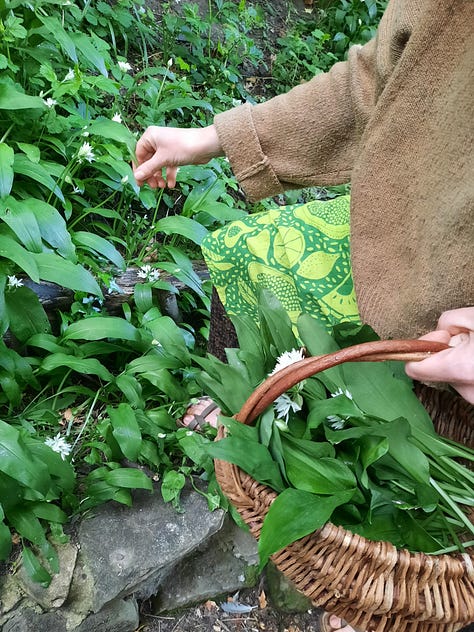
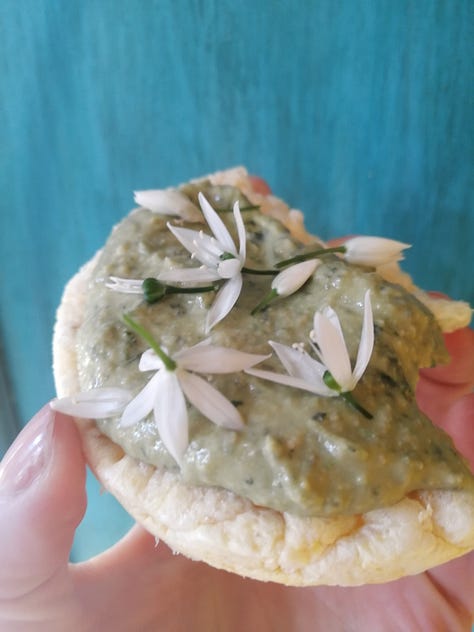

I’ve also been picking a lot of flowers and petals to garnish my meals and make my food look beautiful, exciting and magical. This is a real self-care ritual for me - as a busy single mum, I often feel the heavy mundanity of cooking several meals a day, the exhaustion from my neurodiverse boy refusing a lot of foods, and feeling like I have to churn out snacks at the weekends until my head hits the pillow. Reclaiming meals for myself as a way to deeply nourish and support my nervous system and my body has meant me consciously choosing to make them a bit more special, and decorating with flowers is one way I do this!
So a bit of wild foraging right now is with the Gorse flowers that grow abundantly here in Northumberland. Coastal and moorland-dwelling craggy and spiney plants with bright yellow flowers. The scent resembles coconut and vanilla (which you can really sense when the days are warm and dry) and the flavour of these edible flowers to me is like fresh, raw butternut squash or fresh coconut. They are such a pleasingly bright yellow that they really cheer me up on days I’m finding life hard, and most of the time they don’t even make it home to garnish my foods, I just eat them off the bush! Then a bit of garden-foraging for me includes Calendula this month which is the English Marigold - open daisy-like yellow and orange flowers with edible petals, and Violas (small pansies) which I’ve planted around my garden. The more you pick violas the more flowers they produce and their beautiful faces make me so happy!
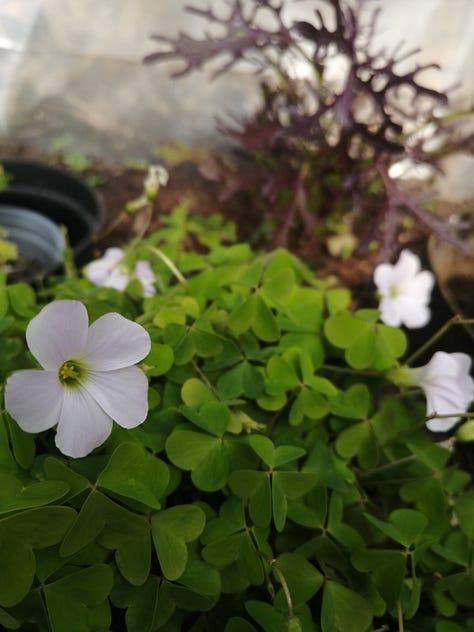


I also have a lot of Wood Sorrel growing in my little polytunnel, which came in with some topsoil that someone donated to me - a lovely surprise! It is a native wild plant that tastes lemony and fresh, the flowers and leaves being edible. In the wild you will find wood sorrel in woodland, usually in plantations of pine trees as they really enjoy the acid soil and that deep shade and dampness of the cool evergreen forests, but you can find them in deciduous woodland too. They have beautiful lime-green clover-shaped leaves and delicate little pale pink trumpet flowers that look like little fairies’ hats. When I was last in Felton, a lovely little village just south of Berwick in Northumberland, leading a foraging walk with my friend
, we found loads of wood sorrel growing in her local woodlands, and picked them to top our lentil soup! Follow Becca’s Newsletter for lovely nature-inspired yoga.Wild Revival x Berwick Slow Food
I led a foraging walk for Berwick Slow Food last weekend which was really well attended and such fun to teach! We walked along the river in Berwick and talked about the abundance of seasonal edibles that are on offer right now. Our highlights were: how to tell Stinging Nettles from Dead Nettles, eating Elm Samoras, and getting geeky about the different types of Wild Garlic and Leek! We tasted Nettle and Cleavers infused water, and I made GF Nettle and Lemon Cake with edible flowers, a Wild Garlic and Lemon Balm Hummus and a Buckwheat Tabbouleh of mixed foraged greens including Garlic Mustard, Dandelion, Wild Marjoram, Mint, Lemon Balm, Nettle, Wild Garlic and Cleavers! There are 2 more Slow Food foraging walks in my calendar so do sign up to those if you are interested, click the link to their website above to contact them to book.
Thankyou for reading - it is so lovely to have you here! I come into your inbox once a month to share these Wild Notes, to let you know what I’ve been noticing and foraging for, and my hope for this publication is that I inspire you to take notice of what’s in Nature where you are. My intention is for you to feel encouraged to go outside, to take that nature walk, and just go out and notice things!
If you’d like to go deeper with me, do join me in the Wild Revival paid membership by upgrading your subscription. I’m going to be writing a post on Lemon Balm very soon, and for the rest of May we will be diving into Hawthorn, learning about the folklore of this magical tree and getting in touch with Hawthorn Medicine. If you’re interested in learning all about her, how to identify Hawthorn, how to connect with her and nourish the relationship you have with this tree, and be encouraged and guided in that journey, then join my membership. You’ll also get access to all the posts in my archive - posts on Nettles from last month, and the post on Rowan and Whitebeam from last year, as well as community foraging chat!
Wild Hygge - join me!
I’ve also got Wild Hygge group coming up next weekend in Berwick, Sunday 18th May at 2-4pm, which I would love you to join me for - foraging, crafts, chatting round the firepit and taking in the calming sounds of Nature - message me to book in! It’s £12 a session and everything is included for an afternoon of Nature connection and relaxed learning, with foraged teas and treats.
See you outside!
Jo xxx



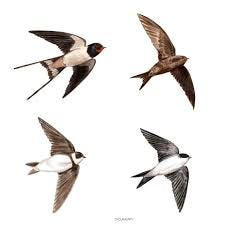

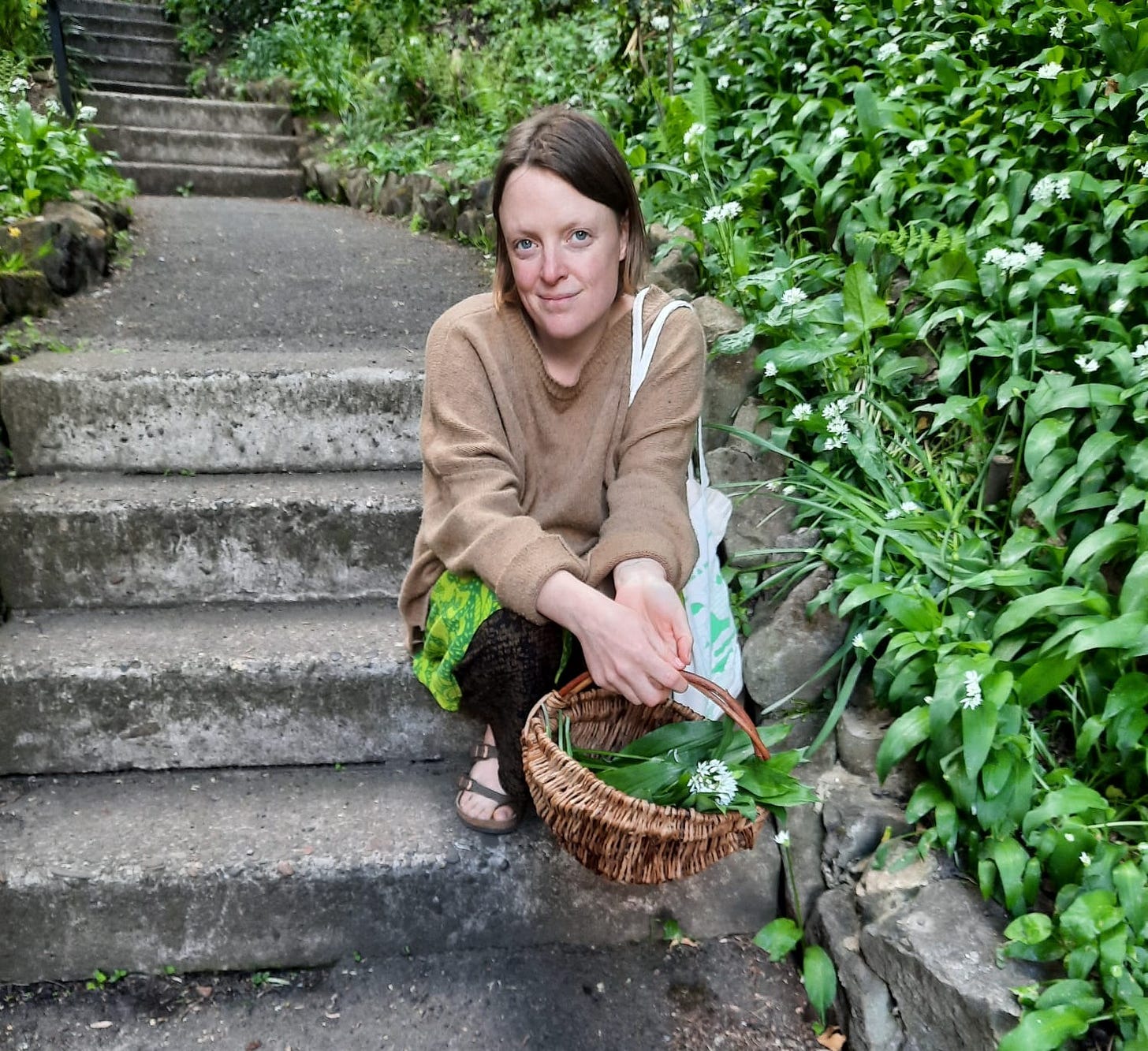
I am so called to picking some nettles and yet I have a real block around trust in myself to actually do it ‘right’!!! Would Iove to make tea with it and dry it though. Love these round ups they are so beautiful, thank you xx
This was so beautiful and so informative Jo, thank you. I love that you are reclaiming snacks by adorning them with flowers, a brilliant idea for a gorgeous glimmer amongst the many demands! xx